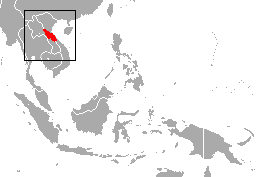Facts About Southern white-cheeked gibbon
The southern white-cheeked gibbon is a captivating primate species indigenous to Vietnam and Laos. They are closely related to their cousins, the northern white-cheeked gibbon, and the yellow-cheeked gibbon. One of the most intriguing aspects of these gibbons is their coloration, which changes as they mature. Juveniles start off light brown, turn black after weaning, and, as adults, males retain their black color while females become brown. The species derives its name from the distinctive white patch of fur around the males' mouths.
These gibbons inhabit lowland broadleaf forests and some mountainous areas. They are arboreal, meaning they reside in trees, and their diet is primarily composed of fruit. Historically, they were widespread across central Vietnam and Laos, but their numbers have diminished due to human activities such as logging, agriculture, and hunting. Regrettably, they are now classified as endangered, with Vietnam's populations particularly affected by habitat destruction and hunting pressures.
First described in 1951, the southern white-cheeked gibbon has undergone various taxonomic classifications over the years. Initially considered a subspecies of different gibbon species, it was eventually recognized as its own species in 2001. Its range overlaps with that of the northern white-cheeked gibbon in the north, and in 2010, a southern population was identified as a new species called Nomascus annamensis. Genetic and vocal studies suggest that the southern white-cheeked gibbon is closely related to its northern counterpart.
This unique species highlights the intricate beauty and complexity of wildlife and underscores the urgent need for conservation efforts to protect their dwindling populations.

 Vietnam
Vietnam